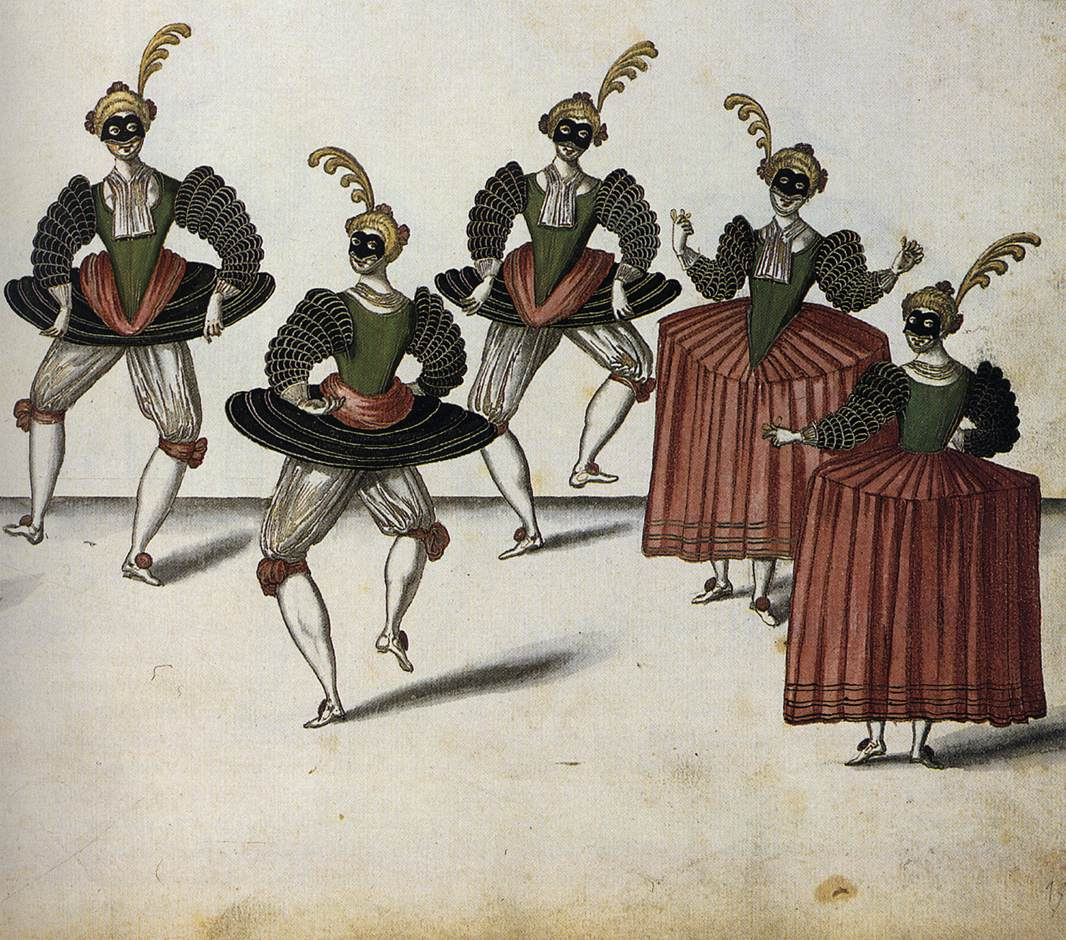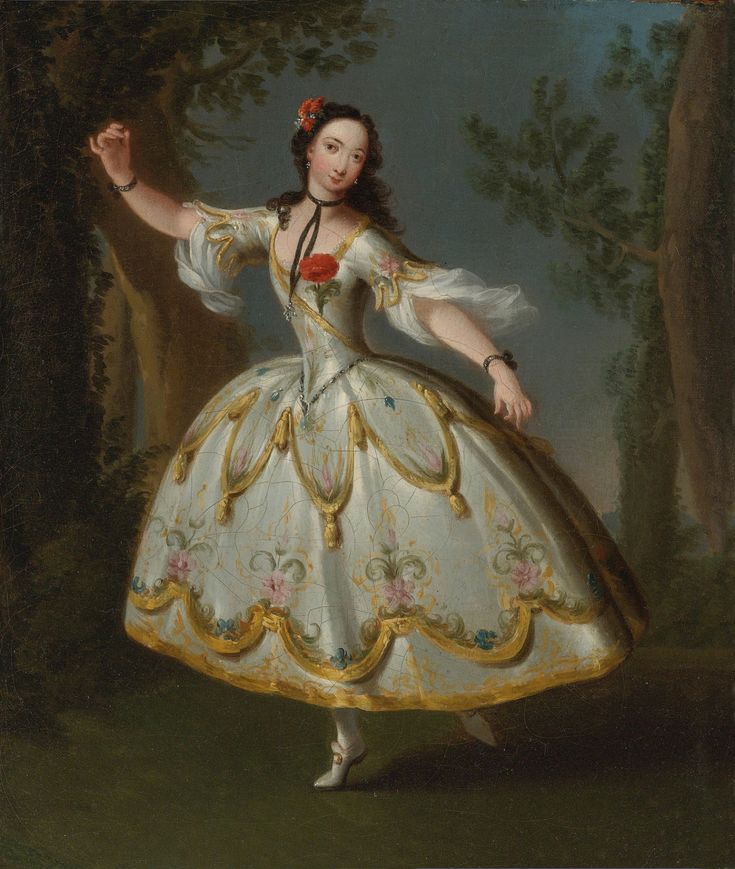
From the beginning of the sixteenth century, public theaters were being built in Venice (1637), Rome (1652), Paris (1660), Hamburg (1678), and other important cities. Ballet spectacles were combined in these venues with processional festivities and masquerades, as stage costumes became highly decorated and made from expensive materials. The basic costume for a male dancer was a tight-fitting, often brocaded cuirass, a short-draped skirt and feather-decorated helmets. Female dancers wore opulently embroidered silk tunics in several layers with fringes. Important components of the ballet dress were tightly laced, high-heeled and wedged boots for both dancers, which constituted characteristic footwear for this period.
From 1550, classical Roman dress had a strong influence on costume design: silk skirts were voluminous; positioning of necklines and waistlines and the design of hairstyles were based on the components of everyday dress, although on the stage key details were often exaggerated. Male dancers’ dresses were influenced by Roman armor. Typical colors of ballet costumes ranged from dark copper to maroon and purple. A more detailed description of the theatrical dress in the Renaissance and Baroque periods may be found in Lincoln Kirstein’s Four Centuries of Ballet (1984, p. 34).

The first Russian ballet performance was staged in 1675, and the Russians adopted European ballet designs. Although costumes for male performers permitted complete freedom of movement, heavy garments and supporting structures for female dancers did not allow graceful gestures. However, male dancers en travesty, often wore knee-long skirts. The luxuriously decorated costumes of this period reflected the glory of the court; details of dresses and silhouettes were exaggerated to be visible and identifiable to spectators viewing from a distance.